|
When you have bought five metres of linen seven years ago and it doesn't really shift for years, but then sells out in 24 hours, you know something is going on. And that something turned out to be an innocent remark in a blog post by Mary Corbet. And this is what she wrote: "See that bolt of fabric? That’s the last of the Alba Maxima. The original manufacturer is apparently no longer weaving it. Sad me. Hopefully, a replacement will be found for this exquisite linen." So what is it about this specific brand of linen? And is it really gone? Let's find out! Maxima alba linen is nothing more and nothing less than Weddingen's Hellweiss 925. You see Hellweiss = bright white = maxima alba. It is the name given to this German linen by the US importer. Weddingen HW 925 is woven in Germany by one of the last small family-owned weaving companies. They also produce very fine Bielefelder Kettgarnleinen; my preferred fabric for needle painting. The maxima alba linen is of very good quality. But that is not all. This evenweave 40 ct linen is equally suitable for counted thread embroidery, such as, but not at all limited to, Schwalm and crossstitch and for non-counted surface embroidery. It is very versatile and ideal for those of you who love to work both on and off the grid! Perhaps even combined in the same piece?
And now the big question: is this top-notch linen now really beyond our reach? Have they stopped producing it? Sadly: yes. However, the manufacturer still has a significant amount of stock for both the Hellweiss and the Weiss (white, old-white, off-white). Just no longer in all the different widths. They did send me a replacement for the Weddingen HW 925 for when it is really gone. It's the 180 Kettgarnleinen. This is a really nice linen too, but a bit thinner. It is, however, a plain weave and not an evenweave. Still very good for surface embroidery, but not for counted thread work. So stock up on maxima alba whilst it is still around!
2 Comments
Weeks ago I saw mention of an embroidery exhibition in Paris on Social Media. After finding out that there is a direct train between Munich and Paris, I decided to go. As the exhibition was soon to end, I did not have the luxury of being choosy when to go or for how long. I and my husband ended up going for 48 hours to a very, very hot Paris. Although I have experienced 40+ degrees before when staying in the deserts of Egypt and Lybia, I hope to never experience Paris in 43,2 degrees ever again! Luckily, the Louvre has cool air vents in most of its stone-paved floors. Guess who walked barefoot during her nine-hour visit? So, what was it all about? The Louvre housed a small, but spectacular goldwork embroidery exhibition in room 505. The pieces dated from the 15th to the 17th century and were made in modern-day Romania. And it turned out to contain some of the largest and most opulent goldwork embroideries I have ever seen! But let's start with the bulk of the embroideries. Romanian or better Wallachian and Moldavian embroidery of the late Middle Ages and early Modern Times is closely related with the Orthodox Church. On display were Orthodox vestments such as: epitrachelion (stole), epimanikia (cufs), epigonation (badge) and epithaphios (an embroidered icon bearing the dead body of Christ). When the Byzantine Empire ceased to exist in AD 1453, the Orthodox Church becomes the keeper of the Greek liturgical culture. The voivodes (princes) of Wallachia and Moldavia see themselves as the heirs and protectors of this heritage. They make donations to monasteries in their own realms, but also to those on Mount Athos in Greece. And some pieces even end up in Jerusalem. Embroidery of this kind was supervised and practised by noblewomen at the court in Byzantium and later at the courts of the voivodes. Both within the noble household as well as in specialised workshops. There is some historical evidence that talented professional embroidery workers were bought free from the Ottomans and they then relocated to Wallachia or Moldavia. However, some of the embroidery workers were serfs. Equally, noblewomen from the Balkans married into the royal families of Wallachia and Moldova. Taking with them and preserving Byzantine embroidery techniques and styles. Due to the conservative nature of Orthodox iconography, it is often impossible to tell where pieces were made or by whom. However, most pieces bear the initials or full names of the donors (abbots, princes, princesses and other nobility). Certain patterns were often even faithfully copied over centuries. Apart from the vestments, there were burial shrouds on display. These huge goldwork embroideries display the edifice of the deceased ruler, his wife or their offspring. The oldest one on display was made for Maria of Mangup before AD 1477 and measures a staggering 191 x 103 cm! Nearly 150 years later, these funerary portraits become even bigger and far more opulent. The goldwork embroidery on them is amazing. Although the exhibition was centred around the banner of Stephen the Great (died AD 1504), I found the piece rather underwhelming compared to the other pieces on display. It measures 124 x 94 cm and shows St. George sitting comfy on a throne resting his feet on a dragon. The figure of St. George is entirely formed of couched silver and gilt threads. Due to the use of conservation net on the whole piece (and indeed many other pieces on display) it was rather difficult to see the actual stitching. This was further complicated by the very low levels of lighting and the dirty glass on the display cases. For those of you interested in this type of embroidery, the Louvre sells an excellent catalogue. Each piece is beautifully photographed and there are even some detail pictures. The book further contains chapters on the political situation of the area during the late Middle Ages, on the historical context of the embroideries, on the banner of Stephen, on the vestments and on the funerary shrouds. As I can only read French with great difficulty, I translated the chapter on the historical context into English. And I am also working on the other chapters and the catalogue part. However, what the book lacks is a chapter on the 'how'. What embroidery techniques were used? What materials were used? It, unfortunately, does not go beyond metal threads and polychrome silk on a velvet background. Do 'how to' books on this type of goldwork embroidery exist? I would love to hear if you know of one! At least a little bit of the 'how' was captured in some of the pictures I took. Here you see a glimpse of the padding underneath the gold threads forming the halo. It really is quite different from the way we do things in western-style goldwork embroidery. I would love to learn more ...
After a successful vernissage and first exhibition weekend, I am a very happy (but incredibly tired!) embroidery artist. It all started in earnest last Thursday with me carefully packing all my embroideries and with my husband puzzling hard to make it all fit into our little red car. We left right after breakfast on Friday morning and drove the 30 minutes to the Dorfmuseum in Roßhaupten. In the meantime, I had seen the first newspaper article on my upcoming vernissage and exhibition. I and my husband unloaded the car and started to unwrap all my embroideries. As my exhibition is hosted in two very large and beautiful rooms at the museum, I decided to place the pieces along all walls before actually hanging them. My nearly 10 years of art embroidery were barely enough to fill the two rooms! But before we could actually start hanging the pieces, the people of Allgäu TV arrived for an interview in front of the camera. Little did I knew that 'in front of the camera' indeed means that the machine sits just inches away from your face. Pretty uncomfortable. And so weird to see myself on film! Here is a link to the video. The interview with me is in the last five minutes. I am so pleased they really took the time to introduce my latest piece 'On the shores of St. Nick'. I was also able to address the whole 'I am officially not an artist' issue. Unfortunately, they did get their embroidery techniques quite wrong :). During the filming, my husband kept hanging my embroideries: He did a great job! As things always take longer than you think, the organiser of the art exhibitions cooked us an excellent lunch. After that, we returned home for a short nap and some much-needed freshening-up before the vernissage later that day. There were about 25 people attending my vernissage and my speech was very well received. I was able to point out my difficulties with being recognised as an artist and the whole craft versus art debate. As there were several journalists among the attendees, this point will certainly get some attention. And I was especially pleased to see five people from Bad Bayersoien attending, as well as my sister-in-law with husband and youngest son, my framer and his wife and Petra from the eco-store I love to shop at. And then ... it happened ... I sold my first piece !!! So incredibly grateful. I had such lovely chats with my visitors. They were all so impressed by my work. They had never seen anything like it. And more than one told me that my pieces are so beautiful that they made them feel happy. What a lovely compliment. During the next two days, the exhibition was open between 15-18 hours. Quite a few people came through the door. Tourists and locals in equal measures. And some even came both days and brought more family and friends along. How cool is that?!
And then ... it happened again ... I sold two more pieces! Still doing a happy dance :). And with two more weekends to come, I am pretty confident that I will sell some more pieces. But first I am hoping for a few long nights in order to lose the bags under my eyes ... I am getting really excited as the vernissage of my first-ever solo-exhibition draws nearer! As this is my first time organising and promoting such an event myself, I really do hope I have managed to think of everything :). Apart from sending invitations to important people, gallery owners and friends; I and my husband also spent two days dropping them in every mailbox in our village. The only things left: hanging the exhibition posters around the village for the tourists to see, signing the insurance papers, preparing my speech and hanging the exhibition. So cool! But that's not all that has been happening in my embroidery life! Last week, I taught crewel embroidery to Kristin from Berlin and Elena from Switzerland. As the three of us were born in the 70s, love to travel, have no kids, love our men (but think they are a rather peculiar species), we had a lot of fun! And cake, of course. Oh, and we stitched too :). Kristin chose an image from one of these generic pattern books you can find in most bookshops. You can use these patterns for a variety of crafts and they are an especially good starting point for embroidery. Picking colours from the full range of Heathway Milano super-quality crewel wool was a true Qual der Wahl (the agony of choice). But she chose well in combining Pomegranate with Laurel and a dash of Daffodil! Kristin really wanted to incorporate lots of colours and even some pearls. Way out of her comfort zone, but working so well! I can't wait to see this piece getting finished. Elena has been working the same image for years. Don't get me wrong, she isn't slow or anything, but she works the same image in different techniques :). As a base, she uses a Russian translation of the RSN-embroidery book. So far she has worked two beautiful irises: one in goldwork and one in blackwork. It was now time to tackle the crewelwork one! Beautiful Heathway Milano Violet and Gobelin Green were the perfect colours for the job. As the original piece in the book is made with variegated threads, we also added some hand-dyed raw silk by House of Embroidery. The fluffy nature of the wool combines very well with the spun silk. And of course, we added some sparkly pearls as well. As Elena really liked working with the wool and filling areas with trellis stitch, I am hoping for a speedy finish :).
That's all for now! I hope to see at least some of you during the vernissage or the opening hours of the exhibition. All my work will be on display and I will be present during the opening hours. |
Want to keep up with my embroidery adventures? Sign up for my weekly Newsletter to get notified of new blogs, courses and workshops!
Liked my blog? Please consider making a donation or becoming a Patron so that I can keep up the good work and my blog ad-free!
Categories
All
Archives
July 2024
|
Contact: info(at)jessicagrimm.com
Copyright Dr Jessica M. Grimm - Mandlweg 3, 82488 Ettal, Deutschland - +49(0)8822 2782219 (Monday, Tuesday, Friday & Saturday 9.00-17.00 CET)
Impressum - Legal Notice - Datenschutzerklärung - Privacy Policy - Webshop ABG - Widerrufsrecht - Disclaimer
Copyright Dr Jessica M. Grimm - Mandlweg 3, 82488 Ettal, Deutschland - +49(0)8822 2782219 (Monday, Tuesday, Friday & Saturday 9.00-17.00 CET)
Impressum - Legal Notice - Datenschutzerklärung - Privacy Policy - Webshop ABG - Widerrufsrecht - Disclaimer

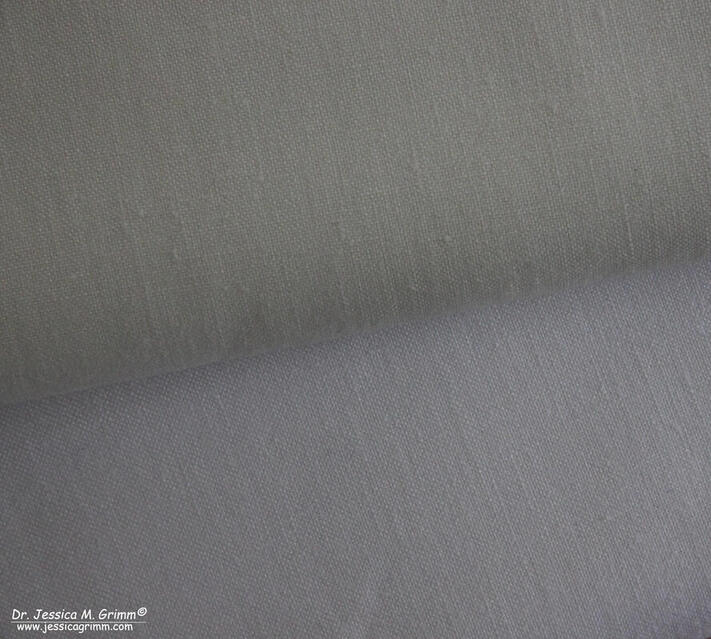
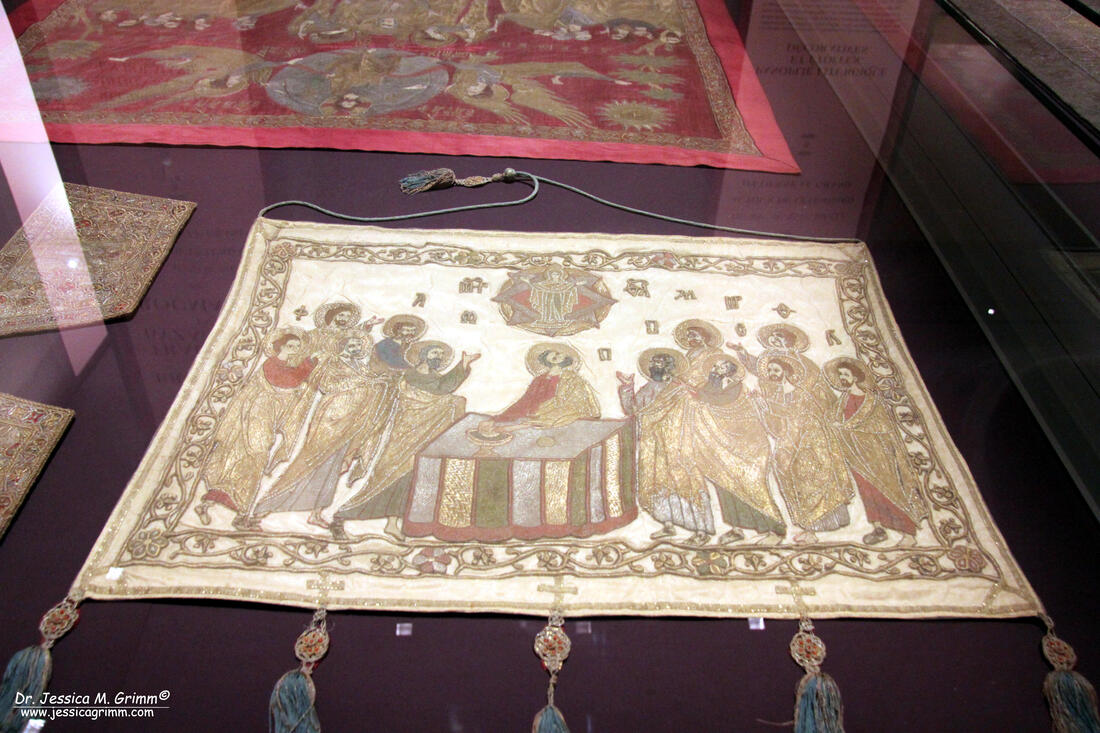
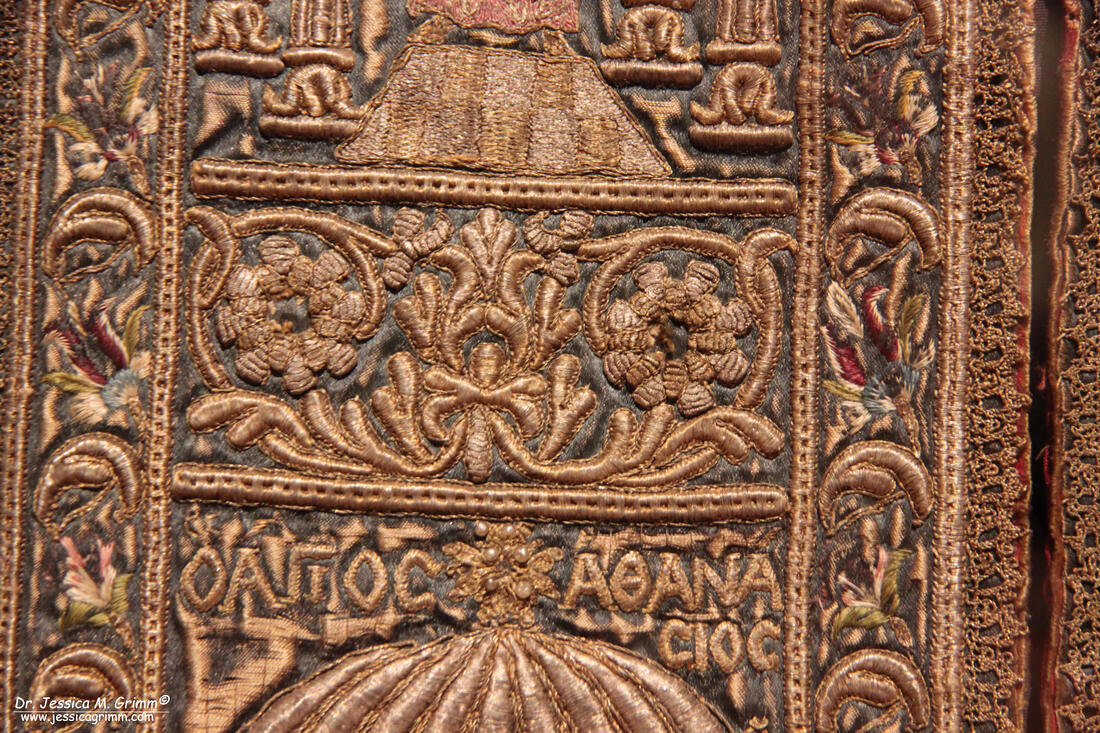
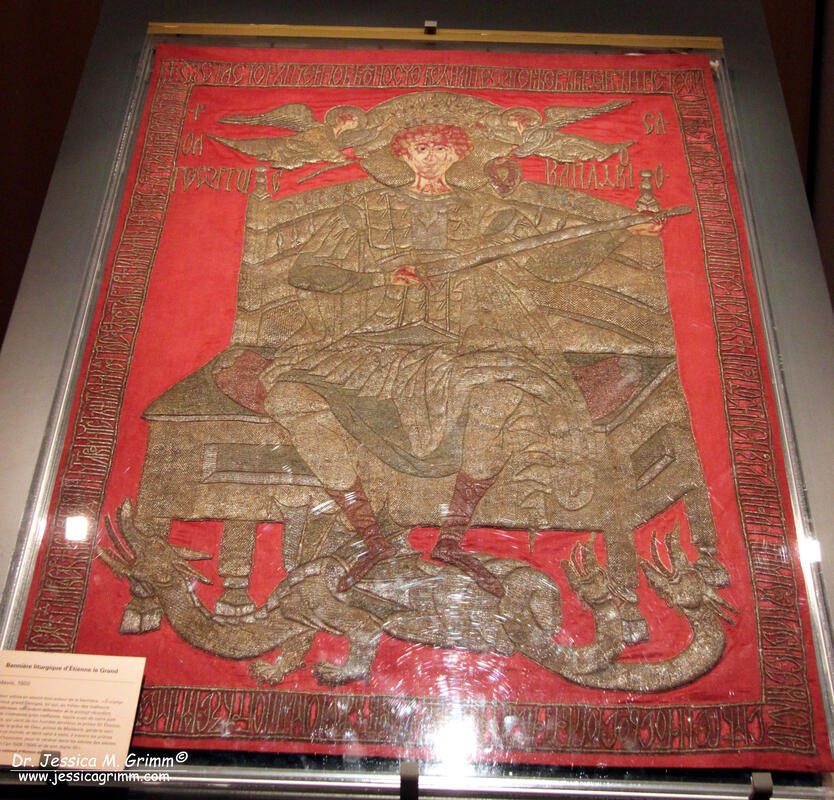
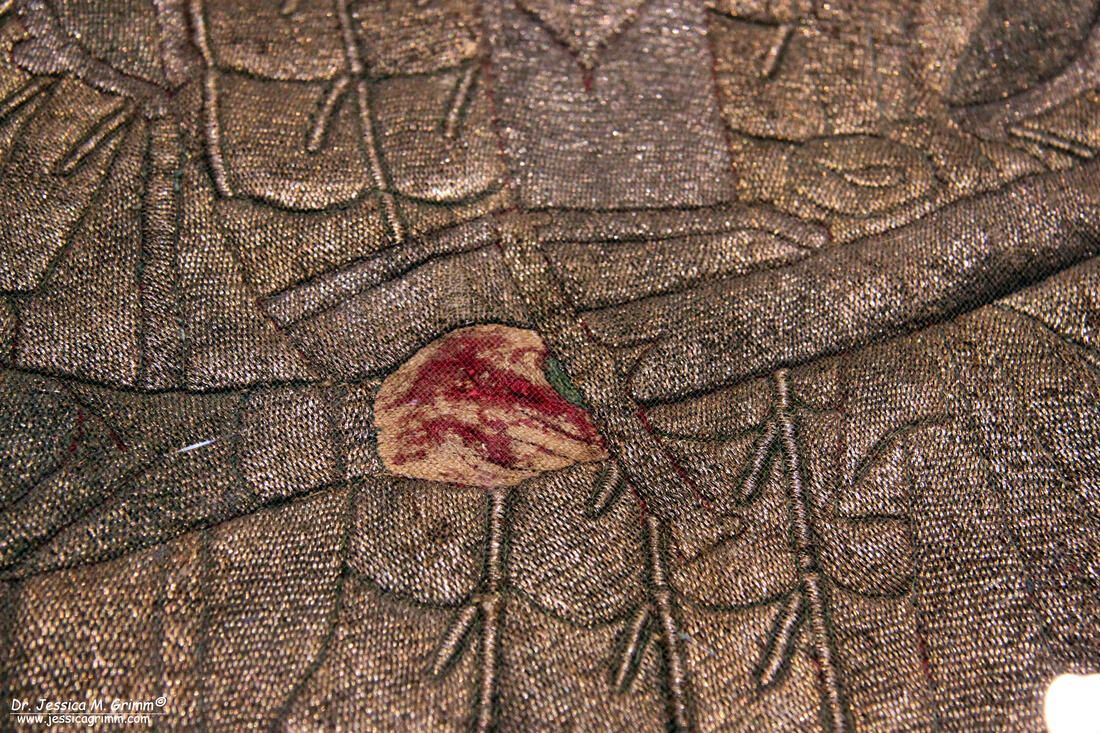
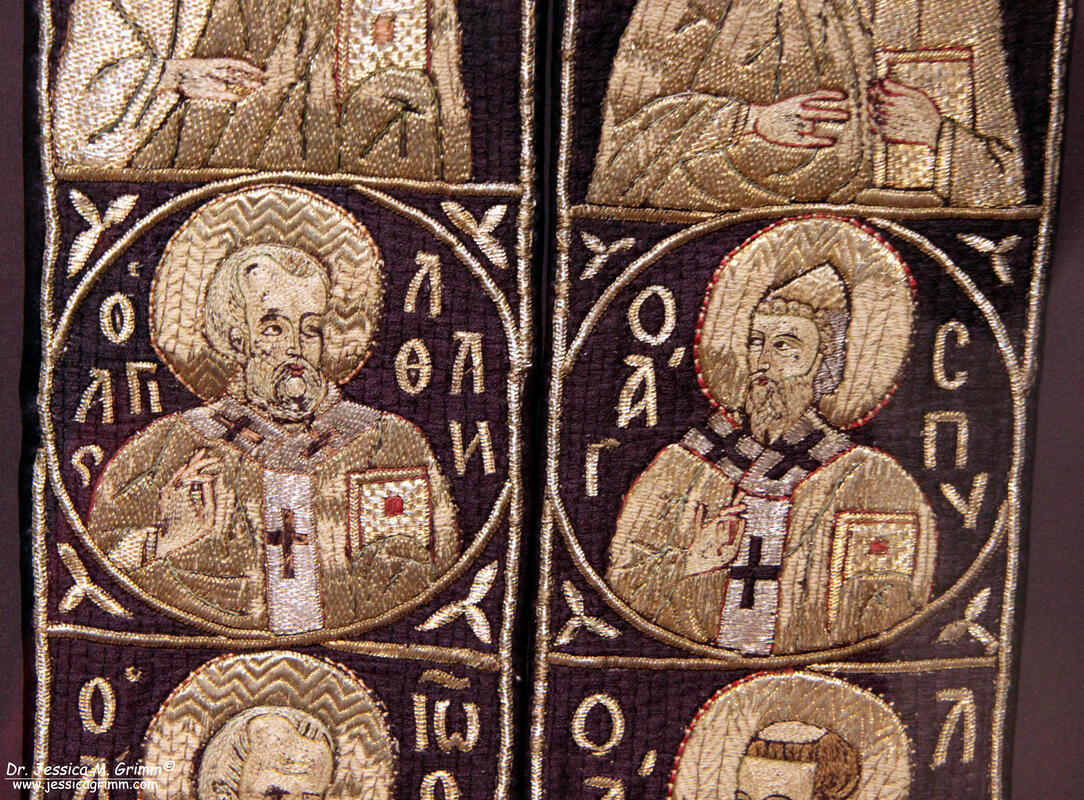
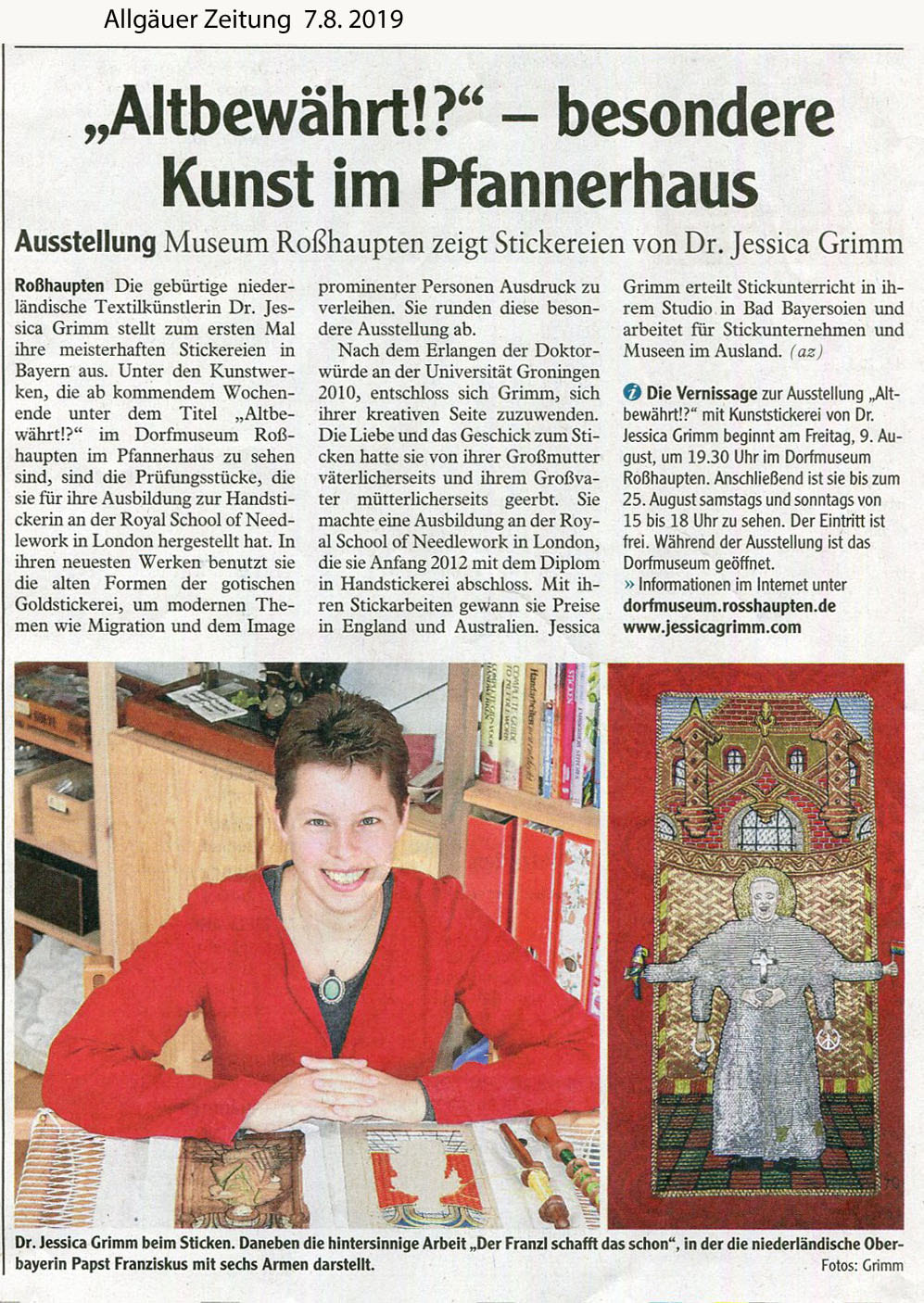
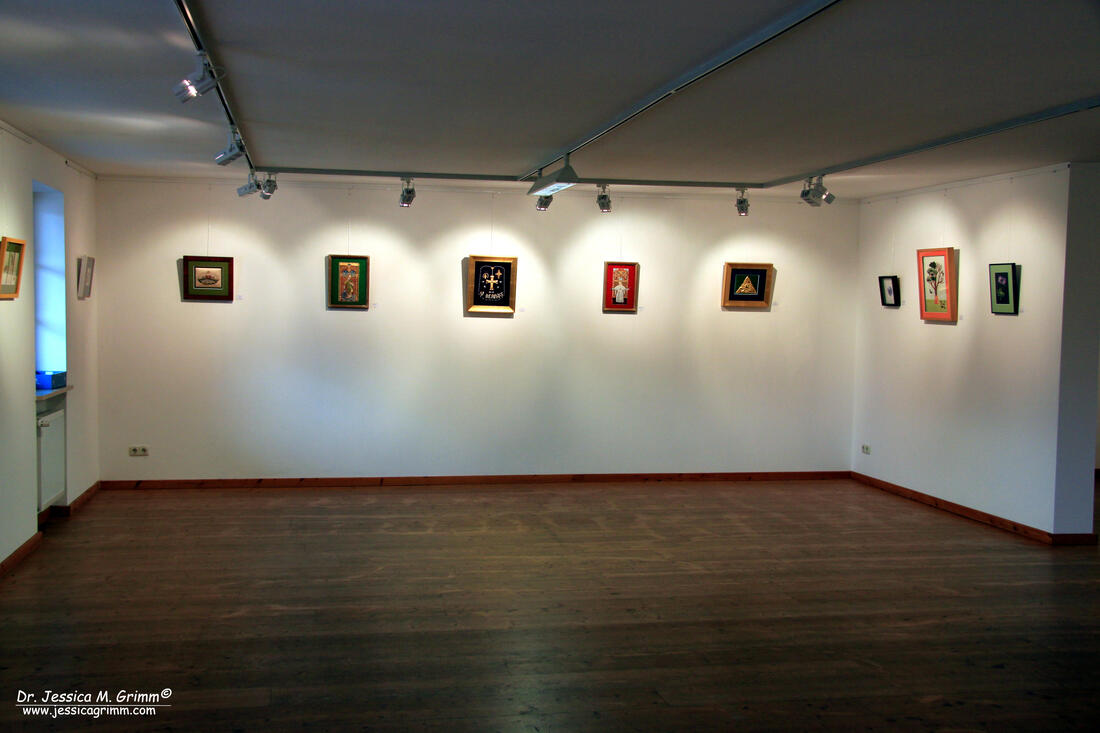
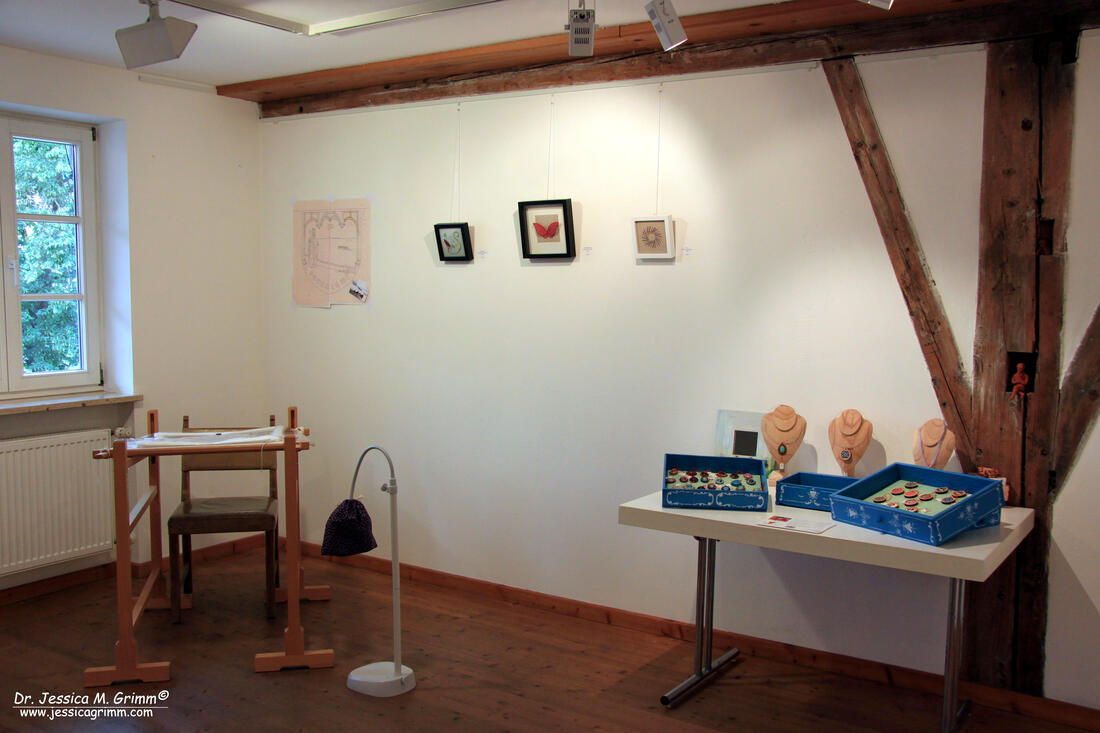
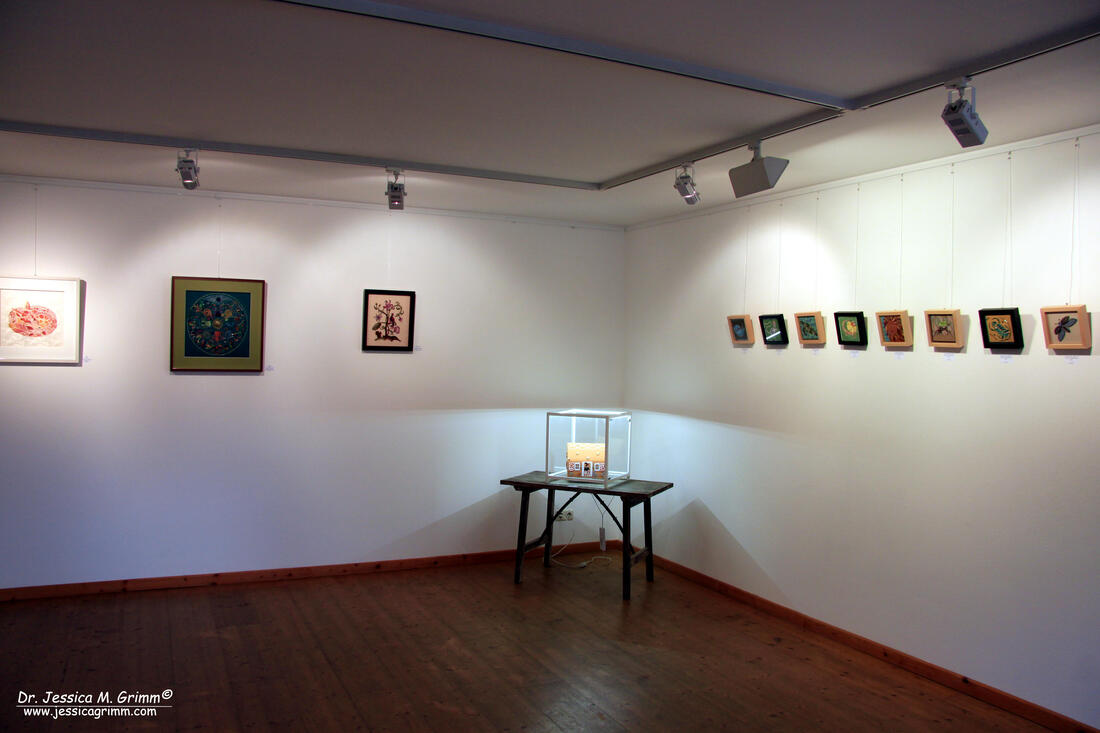
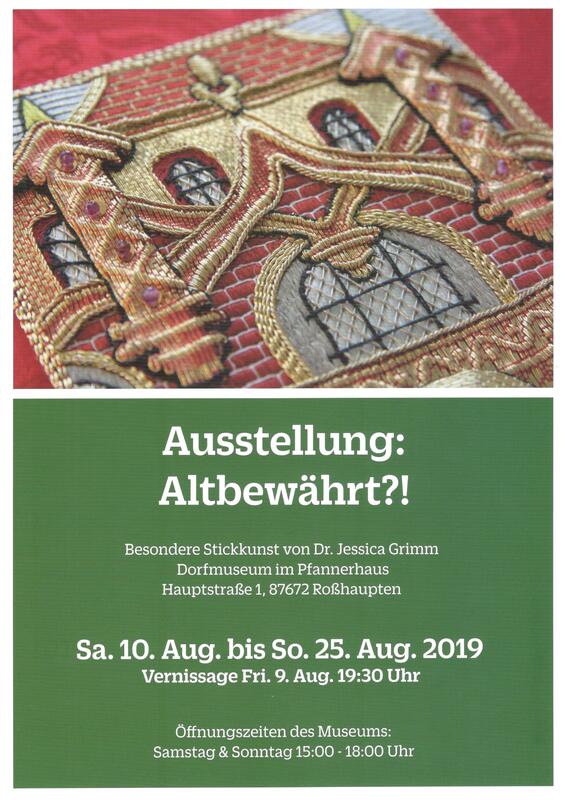
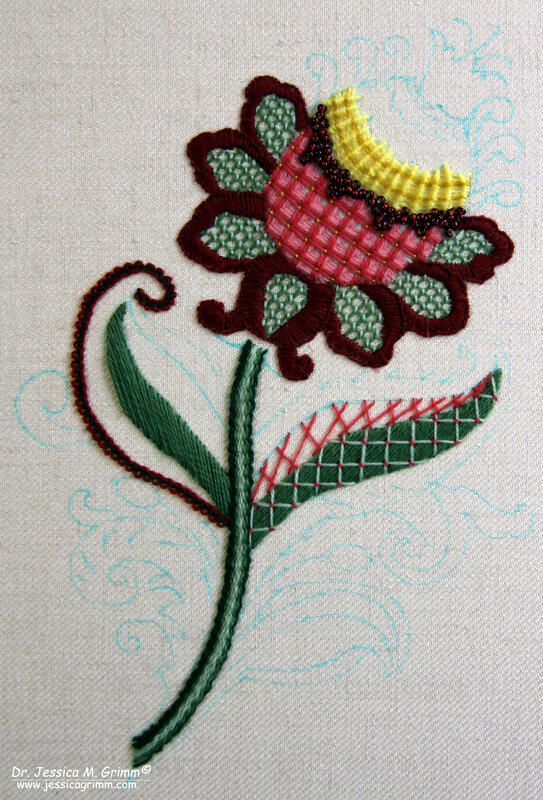
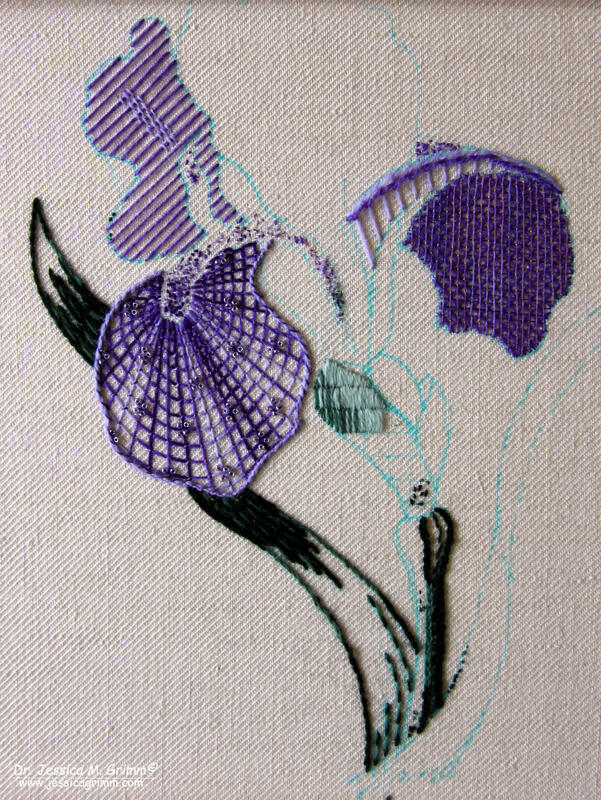





 RSS Feed
RSS Feed